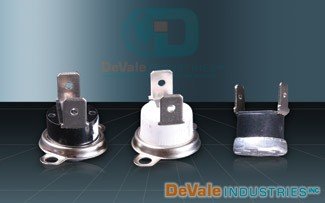sunchaser wrote:
1.* An IR gun is about 50 bucks.
2.* Here is a different question, how big should a vessel be before you elect to routinely do ER checks?
1. While an IR gun is a valuable tool, it only works if someone is holding it, has it turned on, and it's aiming at something.*
We don't have any sort of raw water cooling monitor system on our boat, but I can see the value.* I would pick that over an IR gun simply because if you loose your raw water cooling for any reason--- blocked intake, failed hose, impeller failure, etc---- engines like the FL120 will overheat rapidly and I've been told by people very familiar with the base Ford engine, both here and in England, that the absolute surest way to kill the engine is to overheat it.* According to them the Ford Dorset engine (base engine of the FL120) will not tolerate a serious overheat condition for more than a minute or two before some catastrphic failure will occur.* This is one reason the engine was such a dismal failure in the late 1950s in it's designed purpose as a truck engine.*
So at any sign of the begining of an overheat an FL120 should be shut down immediately.* A raw water monitor of some sort will provide this advance warning.
Since the chances are remote the raw water system will fail in some way when you're aiming an IR gun at it--- unless you station yourself in the engine room during the entire voyage-- a raw water alarm seems to me to be the way to go.
2. I think ER checks have more to do with the boater than the boat.* I've known people in Hawaii who did regular checks of the outboards on their boats during a fishing trip.* And I've known people with larger cruisers who never did any engine checks at all and simply called their mechanic when something "didn't work right."
We remove the covers of the outboards on our 17' Arima after a fishing trip--- be it a one day trip or a week's worth of trips up north--- mainly to look them over and spray them down with WD40.* And to fog them if they're going to be sitting for awhile.* But other than that we don't do anything with them in terms of checks.
We check the engines in the GB before every start to make sure the oil looks okay, coolant, no leaks, no obvious problems, and so on.* And depending on my interest I usually do an engine room check after we've been underway for a couple of hours.* But that's about it.
In my opinion there's really not all that much that can go wrong down there unless there are worn-out or neglected components like hoses, filter seals, belts, pump impellers, etc.* The engines in our boat were designed as vehicle engines in the 1950s, and as such there's really not that much to them.* We had an injector pipe crack-- the engine continued to run smoothly but smell of diesel alerted us to he problem (yet one more reason we never run the boat from the flying bridge.)*
The raw water system bears some paying attention to simply because it's pumping a fluid that's trying to destroy it in terms of rust and/or corrosion.* We've had raw water problems a few times and a failed (leaking) engine coolant pump.* In all those cases, the coolant temp gauge began to creep up so we shut the engine down, tied off the shaft, and finished the trip on one engine.* The raw water system bears some paying attention to simply because it's pumping a fluid that's trying to destroy it in terms of rust and/or corrosion.
But our engine, fuel, and electrical systems are very simple.* Boats with more complex systems most likely require more monitoring, either in person or with sensors, cameras, etc.
But I think how often a boater checks the engine room or space or box is totally a matter of what makes that boater comfortable.* Gear heads may enjoy getting down amongst the machinery.* Others may simply want to make sure their engine's don't overheat or stop charging the batteries.* So I don't think there is any right or wrong answer to "how often do you check your engine room?"
-- Edited by Marin on Friday 17th of December 2010 03:27:26 PM

